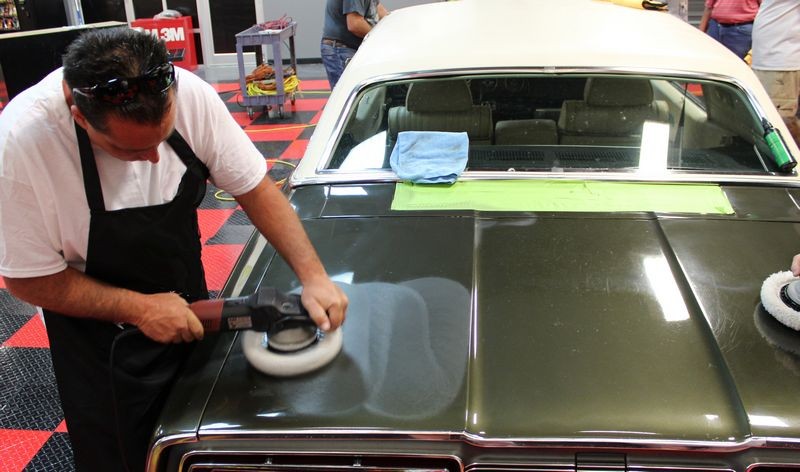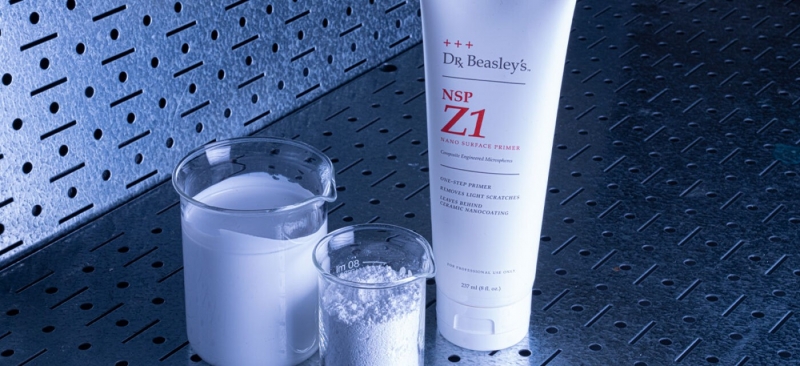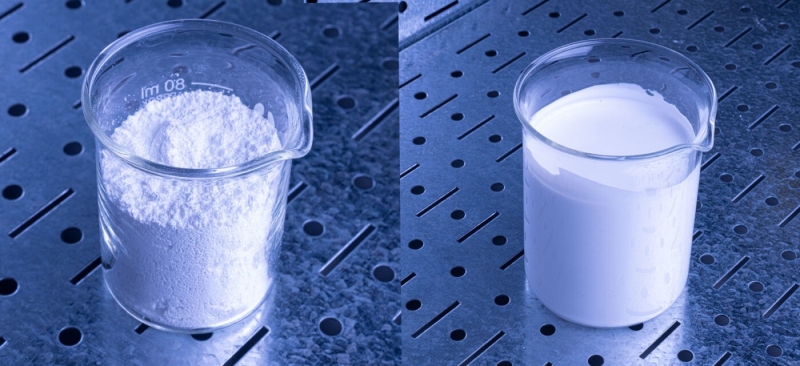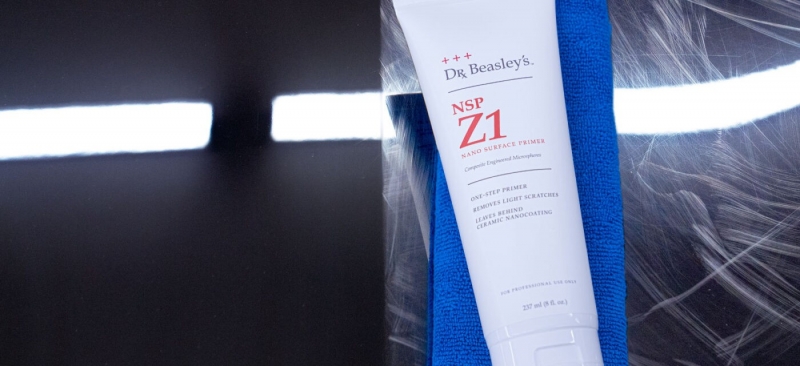 Thanks: 0
 Likes: 0
 Dislikes: 0
-
Vindication - What's the most important factor when it comes to polishing paint
Vindication - What's the most important factor when it comes to polishing paint
I've been stating for years now that the MOST important factor when it comes to polishing paint, (or any surface for that matter, is
Abrasive Technology
To that point, here's just two articles I've written on this topic but there's countless replies to threads on this forum where I've made this exact point, usually when helping someone to UNDO the DAMAGE (micro-marring), caused by inferior abrasive technology.
In this poll - I'm NOT vindicated but that doesn't mean everyone that thinks it's all about them are right.
POLL - What's the number one most important factor when it comes to polishing paint?
When someone thinks how great a car looks is because of them, i.e. their technique, this is an ego-driven idea as I've proved hundreds of times someone that has NEVER used a polisher before and therefore has ZERO technique or experience can turn out professional grade results their very first time as long as they are using GREAT abrasive technology.
Case in point from 2010 - 10 years ago as I type today....
Proof You Can Do It! - Joe The Detailer - Black Porsche Turned into Black Pearl!

And then this article, which is one of my all time favorite articles, mostly because the picture of my friend Jeff tells the entire story.
Abrasive Technology - THE most important factor when it comes to polishing paint
Anyone that's been to one of our classes, (car and boat), or read any of my articles concerning polishing paint, (or gel-coat), knows that I always stress the importance of using products that use great abrasive technology.
Why?
This picture tells the whole story.

In the above picture of my buddy Jeff Bell buffing on the trunk lid of a neglected 1969 Ford Thunderbird.
Here's what you see IN ORDER of what touches the paint.
1: The first thing you see "touching" the paint is the compound.
2: On top of the compound is the buffing pad.
3: Behind the buffing pad is the tool.
4: And the last factor in this process is the person behind the tool.
Of course skill is important but skill is not touching the paint. It is the abrasive technology or in other words, the stuff in the bottle, that is touching the paint.
So when it comes to polishing paint here is what I believe based upon my years of experience to be the most important.
- Product
- Pad
- Tool
- Person
I know a lot of guys that are detailers are also a tick on the Alpha Male side of personality characteristics, you could even say some are a tick ego-driven because for hobby or a living, they take a swirled-out car and through their hard work, they restore a show car finish.
I get it, I've taken a lot of trashed-out cars and restored them to better than factory new condition myself. There's a sense of pride and satisfaction that comes from doing this type of restoration work. Some, (including me), would even go as far as to say that,
Polishing paint is an art form
When polishing paint is taken to an extreme degree, it is the human elements of care and passion, caring about our work and a passion for perfection, that takes the normal step required to polish paint and crosses over a line to where it is now an art form. We invest a part of ourselves into every car we detail.
I've had young people, old people and people from all walks of life attend my classes that have NEVER machine polished a car before. Yet their very first time have produced professional results that rival the best among us. These people did NOT have any experience and thus they also had no real skill to draw from. What they did have going for them was the fact that I ensure in all my classes we only use products that use great abrasive technology.
After abrasive technology
Once you have a good product, the other three factors, pads, tools and technique, are just a matter of,
Pads - Matching the right pad to the product to the job. For example in most situations, if you're using a compound you would choose a cutting or compounding pad and a tool powerful enough to work the pad and product.
Tools - Most tools on the market and sold by Autogeek have enough power to do both paint correction and polishing as long as you use the correct size and thickness of pad.
Technique - When machine buffing paint the basics apply no matter what product, pad or tool you're using.
Buffing technique for most polishers
Start with a Test Spot
Make sure you can remove the defects in one small area to your satisfaction before buffing out the entire car.
How to do a Test Spot
Start at the highest point and work your way down.
This is usually the roof followed by the hood and trunk lid. Next tackle vertical panels like fenders and doors.
Knock out the roof first
Break large panels into smaller sections
After working a section, move onto a new section and overlap a little into the previous section.
How to divide larger panels into smaller sections
Overlap your passes in a crosshatch pattern
When buffing a section, use overlapping passes and work the section using a crosshatch pattern. If you're working a thin panel that is not large enough to use a crosshatch pattern then simply move the polisher back-and-forth along the length of the panel, try to overlap a little in this back-n-forth pass if possible.
Make 6 to 10 Section Passes
In most situations, especially when removing below surface defects, you will need to move the polisher over one section at least 6-8 times and sometimes more.
Don't buff to a dry buff
Always have a wet film of product on the surface right up to your last section pass. Anytime you buff until the surface goes dry you risk micro-marring the paint because you've lost lubrication.
All these things lead to success but it starts with the stuff that touching the paint.
I know a lot of you guys will disagree and say skill is the most important factor but I know for a fact that some products are better than others when it comes to abrasive technology. Lesser quality abrasive technology will micro-mar the surface of a clearcoat finish when working on black paint it will turn it a shade of gray. This happens because when you scratch something clear the scratch appears to our eyes as opaque. Opaque = whitish. So when you micro-mar a clearcoated finish you are turning the clearcoat opaque or whitish and when it's on top of a black basecoat the effect is the paint will become a shade of grey.
This same thing happens to ALL paint it's just harder to see on lighter colored cars.
The goal when polishing clearcoat paint systems is to maximize both gloss and clarity and you do this my remove all defects, both topical and sub-surface.
The goal when polishing single stage paints is also to maximize gloss and clarity as well as bring out the full richness of color and the same techniques you use on clearcoats you use on single stage paints.
New Abrasive Technology
And here's why I feel vindication, note the word vindication is the noun form of the verb vindicate, and by this I mean moving into the future you will see more info content that vindicates what I say about abrasive technology in the context of polishing paint by others in this industry.
Here's a brand new article by Victor Espeland, the Communications Manager for Dr. Beasley's. Victor is a talented writer and I highly recommend reading the article below.
Composite Microspheres: The tech behind Z1’s shine



I'm also happy to say that Victor attended the Roadshow Class I taught at Dr. Beasley's in Chicago back in 2018
Pictures: Chicago Roadshow Class at Simon's Shine Shop aka Dr. Beasley's
Victor Espeland testing out the FLEX Finisher at the 2018 Mike Phillips Roadshow Class at Dr. Beasley's in Chicago, Illinois

That was a great class. Bruno Massel lives in the Chicago area and he stopped by to say hi. In the middle is Jim Lafeber, the man, the myth and the legend behind Dr. Beasley's.

And yeah...
When it comes to polishing paint or as I like to call it, the art of polishing paint, the MOST important factor is the abrasive technology.
Jim said as soon as he has a finalized version of the new NSP Z1 he's going to send me some to test out. I'm already looking forward to it.

Similar Threads
-
By Mike Phillips in forum How to articles
Replies: 207
Last Post: 07-21-2021, 11:35 AM
-
By Mike Phillips in forum How to articles
Replies: 14
Last Post: 07-17-2020, 09:16 AM
-
By Flannigan in forum Tricks, Tips and Techniques
Replies: 34
Last Post: 05-09-2012, 06:27 AM
-
By crxman2010 in forum Motorcycle Care
Replies: 4
Last Post: 03-05-2012, 09:49 PM
-
By mixxer in forum Auto Detailing 101
Replies: 37
Last Post: 11-20-2009, 08:05 PM
 Members who have read this thread: 0
Members who have read this thread: 0
There are no members to list at the moment.
 Posting Permissions
Posting Permissions
- You may not post new threads
- You may not post replies
- You may not post attachments
- You may not edit your posts
-
Forum Rules
|
| S |
M |
T |
W |
T |
F |
S |
| 31 |
1
|
2
|
3
|
4
|
5
|
6
|
|
7
|
8
|
9
|
10
|
11
|
12
|
13
|
|
14
|
15
|
16
|
17
|
18
|
19
|
20
|
|
21
|
22
|
23
|
24
|
25
|
26
|
27
|
|
28
|
29
|
30
| 1 | 2 | 3 | 4 |
|













 Thanks:
Thanks:  Likes:
Likes:  Dislikes:
Dislikes: 






 Reply With Quote
Reply With Quote
Bookmarks